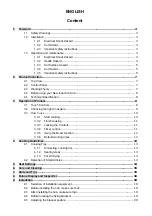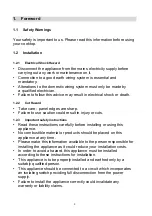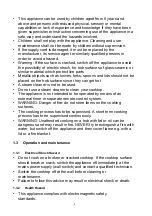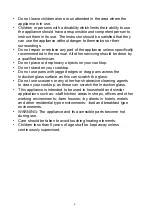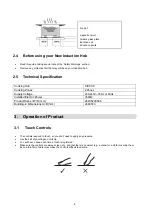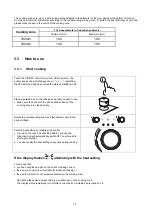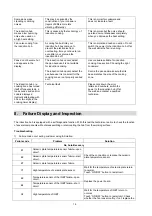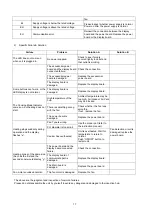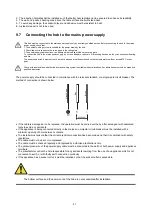
9
3.2
Choosing the right Cookware
•
Only use cookware with a base suitable for induction cooking. Look for the
induction symbol on the packaging or on the bottom of the pan.
•
You can check whether your cookware is suitable by carrying out a magnet test. Move a
magnet towards the base of the pan. If it is attracted, the pan is suitable for induction.
•
If you do not have a magnet:
1. Put some water in the pan you want to check.
2. If does not flash in the display and the water is heating, the pan is suitable.
•
Cookware made from the following materials is not suitable: pure stainless steel, aluminium or copper without a
magnetic base, glass, wood, porcelain, ceramic, and earthenware.
•
Some pots and pans on the market are not suitable for induction cooking, because they have only a part of the bottom
in ferromagnetic material with parts in another material. These areas may heat up at different levels or with lower
power. In certain cases, where the bottom is made mainly of non-ferromagnetic materials, the hob might not recognise
the pan and therefore not switch on the cooking zone.
Do not use cookware with jagged edges or a curved base.
Make sure that the base of your pan is smooth, sits flat against the glass, and is the same size as the cooking zone.
Use pans whose diameter is as large as the graphic of the zone selected. Using a pot a slightly wider energy will be
used at its maximum efficiency. If you use smaller pot efficiency could be less than expected. Always centre your pan
on the cooking zone.
Always lift pans off the Induction hob – do not slide, or they may scratch the glass.



